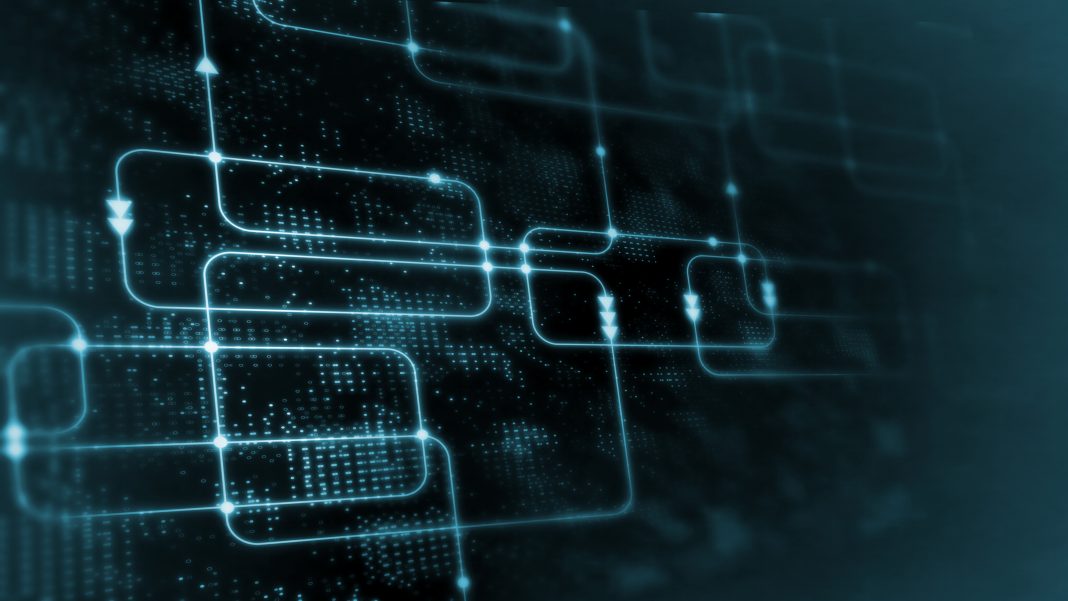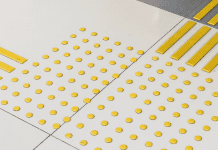Computerised Maintenance Management System (CMMS), coordinates a company’s maintenance activities through digital software, from routine servicing to machinery breakdowns and performance issues. In this article, Elecosoft explains the key features and benefits of the system, and why companies should invest
Maintenance makes a critical difference to a company’s operational and financial performance. Unreliable (and even broken) machinery can slow your production and impact customer service, damaging both your reputation and your future sales.
Smart-minded companies realise that better asset management yields bottom-line benefits, and are investing in digital solutions like CMMS software to streamline workload, manage resources and extract valuable data.
What type of companies use CMMS software?
CMMS functionality is useful for any company with assets that need regular maintenance schedules or might require engineering visits. It’s traditionally used in sectors like automotive, healthcare, food, and local government (councils). Many manufacturing companies rely on CMMS technology; for example, Kingspan and Wren Kitchens use ShireSystem CMMS by Elecosoft.
However, use cases for CMMS software are diversifying, as more companies embrace the benefits of digital transformation. CMMS enables skilled workers to do their job more efficiently and productively, while generating essential maintenance data that can be shared with multiple people – from entry-level technicians up to the board of directors.
We have some unusual examples of CMMS technology in action within Elecosoft’s customer base. Aviation refuelling company North Air uses ShireSystem to run maintenance operations across its mobile operation and seven managed sites. Meanwhile, Chester Zoo’s facilities management team uses ShireSystem to coordinate workload, responding to 400-500 work requests every month.
When should you invest in a CMMS system?
Companies looking for a CMMS system tend to fall into one of two groups.
The first group of companies uses excel spreadsheets or paper request forms to manage maintenance but wants to upgrade to something more dynamic.
If you’re currently in this position, moving to a CMMS system will enable you to track maintenance workload in real-time, schedule work orders, manage inventory, and assign tasks to your technicians. It’s an effective way to maximise the value of your team and the performance of your machinery.
The second group of companies is already using a basic CMMS system, but are considering something more sophisticated.
If you fall into this group, look for CMMS software that will enable your company to scale and grow. For example, some market-leading solutions include modules for detailed data analysis and setting/tracking maintenance KPIs, to help you move from a reactive to a predictive maintenance model.
What are the benefits of managing maintenance through CMMS?
No company invests in software for its own sake; any new technology needs to deliver bottom line benefits. And the right-fit CMMS system has the potential to provide key advantages, including:
360 degree visibility
Many facilities management teams struggle to gain an accurate overview of their workload, which leads to critical work requests slipping down the schedule. By managing maintenance through CMMS software, your company gains complete visibility over all outstanding work requests and routine maintenance tasks, to help you optimise workforce schedules and their effectiveness, increasing customer satisfaction.
Greater efficiency
CMMS software automates many of the tasks that are currently being completed manually by your maintenance team, speeding up response times and eliminating human error. Since ADI Group moved to ShireSystem CMMS, it has automated 90% of its maintenance workload.
CMMS can deliver other efficiency benefits too, such as digital inventory management. Your technicians know exactly what spare parts are available when scheduling work, improving their efficiency and asset up-time.
Increased productivity
By automating basic processes through a CMMS system, your technicians can focus on putting their skills to good use, increasing productivity. Plus, better-maintained machinery breaks down less often, which means your company operations aren’t being compromised by underperforming assets, minimising production downtimes.
Reduced maintenance costs
Understanding your full maintenance scope reduces waste and prevents overspending on inventory. Better-maintained machinery also lasts longer, maximising the lifetime of each asset.
Higher health and safety/compliance standards
Well-maintained machinery is safer for staff to use, and CMMS software will manage asset health throughout its lifecycle, from installation through to decommissioning. Any changes or updates made to machinery are centrally documented through the CMMS system, providing a digital audit trail for both reporting incidents and proving that your assets are compliant with safety regulations and sustainability targets.
A planned approach to maintenance
Most facilities management teams currently react to machinery issues. Investing in CMMS software allows you to predict when assets will need servicing or parts replacing based on real-world data, so you can stay one step ahead at all times.
Clear collaboration
Upgrading to a CMMS system with built-in analytics gives you the capacity to easily share information across your company. This puts engineering, operational and strategic staff on the same page, to support communicative and collaborative work.
Higher staff morale
Digital transformation is helping companies to run more efficiently, but more technology means greater pressure on maintenance teams. A CMMS system makes every aspect of asset management easier to coordinate, so life is less stressful for your technical staff.
What features should you look for in a CMMS program?
Fundamentally, CMMS software needs to streamline and automate maintenance processes. Therefore, your company needs to look for technology that will be simple for your facilities management team to use on a daily basis.
There are a number of core capabilities that an industry-leading CMMS system should feature. These include:
- Planning and scheduling maintenance activities and resources for all locations and assets
- Integrating work requests with planned maintenance tasks (and tracking their progress)
- Converting work requests to work orders with relevant digital documentation attached
- Managing parts, stock and purchasing cycles
- Centrally storing service and inspection data (with document control)
- Creating health and safety/compliance reports such as risk assessments, quality reports, testing, calibration, and safety audits
- Integrating with other critical software such as ERP or Business Intelligence solutions.
If your company operates in a tightly-regulated sector, make sure the CMMS software you choose is compatible with industry compliance. ShireSystem supports regulatory requirements for the pharmaceutical and food and beverage industries.
Many companies also look for CMMS technology that’s available both in a web browser and mobile app format, to support staff while they are out in the field.
For example, engineers at Cambs Farms Growers are on the road for 2-3 days at a time, working on agricultural machinery across 5,000 hectares of land. The company uses ShireSystem’s Mobile Pro app to maintain communications; technicians take notes and mark jobs as completed as they go, rather than waiting until they next return to the workshop.
Mobile Pro provides remote workforces with online and offline ShireSystem capabilities
These capabilities include:
- Work Orders: Employees in the field can create, receive and send work orders
- Meters: Carry out metre readings for usage-based maintenance
- Data Collector: Quickly and accurately collect asset data ‘on-the-spot’
- Stock and Materials: Perform stocktakes and record deliveries
What other CMMS features does ShireSystem include?
ShireSystem is intuitive-to-use CMMS/CAFM (Computer-Aided Facilities Management) software for managing and maintaining assets, plant, spares, buildings and facilities. Its core modules include:
- Work requester: allows people across your company to submit work requests to the maintenance team and check their status in real-time
- Resource Planner: view of current and planned work, creating shift patterns around workload and staff availability
- Stock and Inventory Control: manage and maintain stock levels and control equipment availability
- Permit To Work: determine processes that support health and safety and regulatory compliance
- Purchasing: controls internal requisitions and external purchase orders
- Management KPIs and Reporting: monitor performance on business objectives and sustainability goals
- Costs and charges management: create, track, invoice and analyse charges to manage contractors and enable inter-departmental cost transfers
- Location security: specify what data each team member can see, preventing unauthorised people from viewing or modifying information
- Wallboard: a powerful way to visually share relevant, actionable data for your contractors, facilities and maintenance teams.
How easy is it to deploy CMMS software?
Implementing a new CMMS system can be very straightforward, depending on the type of software you choose.
Cloud-based technology is quicker, simpler and more cost-effective to deploy, because it doesn’t involve any physical hardware or software being installed on-site. It’s also easier to maintain, as updates can be deployed to your CMMS software remotely, and you can also add new features and capabilities over time without requiring complex upgrades and integrations. A cloud CMMS system is designed to grow and scale with your company.
Another element to consider is your choice of technology partner. When you’ve found a CMMS program that meets your company’s needs, make sure you discuss training and customer support with your shortlisted vendor. A well-planned onboarding process will help you to achieve rapid return on investment.
I’m ready to onboard: what should I do next?
Hopefully, by now you can clearly see the benefits of adopting CMMS technology. If you need further support with your decision, you may find our blog post on 5 Key Factors to Consider When Choosing a CMMS helpful.
If you’re ready to embrace CMMS software to automate and streamline your asset management, book a free online ShireSystem demonstration.
ShireSystem experts will show you the features and benefits of our cloud-based CMMS system, and walk you through the roll-out process – to make maintenance easier to manage as quickly as possible.

















